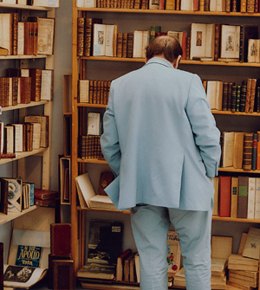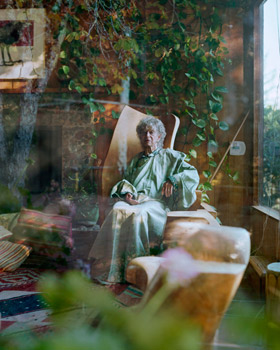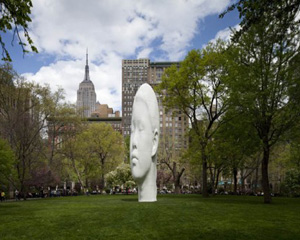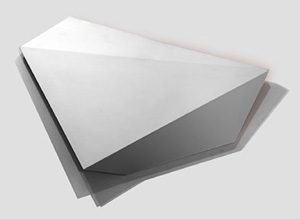The Apple of the Art Fairs
John Haberin New York City
The 2019 New York Art Fairs II
The art fairs are not just overwhelming but ruthless. They are also not just an opportunity but also, at their best, kind of fun. No wonder people hate them but keep attending.
In other words, I am beginning to think that they are to art what big tech is to the Web. They can pop up in one city, only to appear somewhere else in no time halfway across the planet. They have their Facebook in the Armory Show, out to please everyone and no one, while confusing you and selling you something. They have their equivalent of shopping malls, like Amazon, while driving oddball competitors and vital galleries alike out of business or into the cloud. Most of all now, they have their Apple in Frieze. Its obsession with quality control makes it a pleasure, but only for those who can afford it. 
It inaugurated the May art fairs, and it now has plenty of company, but people still call this Frieze week. It began as clunky and expensive, like an iPhone, but gradually did its best to offer a warmer welcome. In its eighth year, it has added so many features that I needed the map as a manual. I pick up the story from my report on the March New York art fairs with two that focus on a single medium that fairs often neglect, Art on Paper in March and the Photography Show in April. I once again hunt down some scrappier and some more generic options, in hopes of an Android, and I may have found a fine one in a fair of contemporary African art, 1-54. Frieze still came in the end as a costly relief.
Out of hand
You may go to Art on Paper for an alternative to the art fairs. In place of the noise, the traffic, and the competition, works on paper might promise an artist's book and the artist's hand. It may have you looking to drawing for a peek behind the scenes, for an artist's first thoughts and the artist at work. Then again, you may go for the ultimate in art fairs, where anyone can be a player and everything is on the table. After all, who in the arts does not deal in works on paper? The only difference is that, at this fair, something somewhere might be halfway affordable.
Which expectation will be disappointed? You guessed it. Art on Paper now attracts a crush of visitors all the way to a Lower East Side pier for its more than a hundred booths. They know that almost anything can count as work on paper, even totems or scarecrows of pigment on cotton. Much else, too, could pass for painting or sculpture, and photos run to poster size. The only surprise is how much is not on display.
The fair has mostly prints, few top artists, and little sense of a history before, say, last year. Among the galleries, most are regional, and almost none represent the artists on view or their estates. Even the many publishers rather than dealers shy away from book art. This could be the world's largest poster shop or art's ultimate shopping mall. In every way, it has gotten out of hand. Still, one can always make smile at bustle alone or the half dozen installations, like the totems by Roland Poska or what could pass for soccer balls turned inside-out, by Liz Jaff.
 Samuelle Green may have the best of the bunch with a cave lined with pages from used paperbacks. Anyone can crawl in to enjoy its winding passage and spiky pages. Green thinks of them as organic form—although inorganic drips would have molded an actual cave in much the same way. Only one person at a time can enter a smaller cylinder, by Katrine Hidebrandt-Hussey, for a single curved work on paper. Her concentric and overlapping circles shift palpably as one turns one's head. The remaining installations are trite at best, like birds molded from shipping cartons, by Paul Villinski, or a mobile of cut-paper swirls overhead, by Wendy Letven. Then again, one could say much the same about the fair.
Samuelle Green may have the best of the bunch with a cave lined with pages from used paperbacks. Anyone can crawl in to enjoy its winding passage and spiky pages. Green thinks of them as organic form—although inorganic drips would have molded an actual cave in much the same way. Only one person at a time can enter a smaller cylinder, by Katrine Hidebrandt-Hussey, for a single curved work on paper. Her concentric and overlapping circles shift palpably as one turns one's head. The remaining installations are trite at best, like birds molded from shipping cartons, by Paul Villinski, or a mobile of cut-paper swirls overhead, by Wendy Letven. Then again, one could say much the same about the fair.
The most cautious of art fairs is reinventing itself, cautiously. The AIPAD Photography Show gives Alex Soth, the photographer of lives in transit, space as a curator of domestic interiors as "a room for solace." At the back of its midtown pier, as tall partitions fall away, an extended section for books and archives takes on the calm of a library—in welcome contrast to publishers in Art on Paper. One can still find a decent enough history of photography, but it may take some doing. If one had any doubt about the likes of Lee Friedlander, Sally Mann, or Paul Strand, a single photo by each pops right out from a decidedly mixed bag. And galleries devoted to the medium must compete with the usual assortment of pop stars, homes to die for by the sea, and vintage New York.
It comes down to the demands of an art fair, where an intimate medium must draw you in from the crowd and a reproducible one must anoint itself as art. (Hey, I just saw those recent photos by Soth and that Andy Warhol Polaroid at a different gallery altogether in New York.) Here Rana Matar's brightly colored shapes on white must pass for experiment. Several galleries juggle the demands with two by no means adjacent booths, one for a single artist and one to trot out their wares—including Robert Mann, with elusive presences in familiar spaces by Cig Harvey, and Yancey Richardson, with blackness as allure for a South African photographer, Zanele Muholi. Lissa Rivera (with ClampArt) goes all the way to sexual politics with portraits of herself and her partner. And Dorothea Lange from 1920 to the 1960s (with Richard Moore) can still find new ways to get the marginalized to look you in the eye.
Commercialism and squalor
I could not bring myself to the ranks of TEFAF, to see what forgotten painter or furniture designer is elevated to old master, but maybe next year. I also skipped a May start-up, Objects & Things in Bushwick, on the remote border between Brooklyn and Queens. At the Other Art Fair in Greenpoint, Saatchi still takes its commission from more than a hundred artists without a gallery. It feels that much more the marriage of commercialism and squalor, especially now that Moniker has moved to Manhattan from a block away. NADA has allowed its affiliated galleries a house on Governors Island through the summer, but allow me to defer them to a summer tour as well. So what alternatives does that leave?
Three years into its stay in downtown Brooklyn, Fridge still seems in exile in a hotel lobby, where the guests must think that they are seeing art by neighborhood kids. It still seems less a fair than an artist collective in need of a collective goal. This year, though, it expands to the hotel gym and looks for respect, starting with an homage to Frida Kahlo. Sure enough, Audrey Anastasi contributes a fair likeness of Kahlo in a fairly Kahlo style, but otherwise both announcements seem like much needed come-ons. (Hey, I brought my gym bag.) Emily Rutgers Fuller does turn modesty to her advantage with bright paper grids that incorporate marks and photos of the rural landscape that she knows well, and the intrusions on abstraction situate them in the big city as well. 
Now in Soho, Superfine! still has its exclamation point. It is also still a mess, and fans will not have it any other way. If so, they may be disappointed by Moniker. Without the dark energy of a waterfront warehouse, it can seem almost conventional, apart from a shed by Fatherless—an Illinois collective, that invites you in and, in a poster, curses you out. Still, both retain the drawbacks of fairs without dealers, at once gaudy and trite. Their uniformly traditional media draw on fashion, graffiti, Instagram, and little else.
For all that, 1-54 on its move from Red Hook to the Meatpacking District shows that fairs can still bring something to contemporary art. With its twenty-five galleries from as distant as Martinique, Mali, and Egypt, I knew that I was going to learn something—and right away with grainy silkscreens of distant faces and totems on canvas and tents, by Raphael Barontini (with the Pill), I knew that African art is both elusive and very much alive. The fair's artists often mine at once portraiture and African tradition, but with an awareness of Western art as well. They can be glittery like Joana Choumali (with Loft) or fantastic like Thameur Mejri and Cameron Platter (with Gallery 1957), but still down to earth. New York dealers with an investment in African art include James Cohan, Richard Tattlinger, De Buck, Yossi Milo, and Danziger, the last with informal portrait photos by Seydou Keïta. His subjects seem both old friends and a world apart.
Further upscale, a lone April art fair could serve as a warning to others as to what they might all too quickly become. ArtExpo NY has the prestige and inconvenience of the very same midtown west pier that Volta ceded for 2019 to the Armory Show, but with an even greater exodus of galleries from major arts centers. Here a curator from Forest Hills has to stand almost solely for New York. The work has the same tensions between prestige and novelty. It settles for tacky retreads of strategies from Modernism and poster shops. Expect overkill and Day-Glo colors applied to your worst imaginings of people, places, and horses. And then a month later and two piers to the north, one faces a more polished but truly generic choice in Art New York.
Art New York still has all the trappings of an upscale art fair except the artists and the galleries. Now merely "presented by" Art Miami, it also cannot outgrow its roots in Miami Basel and then Miami New York. It has its high-ceilinged midtown pier, the very same as for the Armory Show, and large works of art—often printed on vinyl or metal to enhance their sheen. And the entirety could pass for a suburban print shop, for all the paintings—with few known artists, most notably Grace Hartigan (with C. Grimaldis), to anchor the knockoffs. When you come to three different images of the Beatles at three different booths, it may be time to move on. As serious galleries give way to financial pressures, could there be a saving grace in the priciest fair of all?
Size matters
Frieze may still take a pricy ferry ride to Randall's Island on top of everything else, but it is seeking more of a presence than ever in New York. It now sponsors three installations in Harlem, in conjunction with White Box, and it squeezes more than a dozen bad neighbors into Rockefeller Center, as Frieze Sculpture. (Allow me to defer a report to a tour of New York summer sculpture.) It makes as big a splash as possible within its tents as well, while adding half a dozen more features. Some galleries take two booths in response. And they, too, work overtime to compete for attention.
Size matters right by the entrance, where Lauren Halsey, winner of the Frieze Artist Award, erects her Prototype Columns with mysterious markings in white. Just behind it comes a field of silvery spheres by Yayoi Kusama (with Victoria Miro), as Narcissus Garden, and a mural by Chris Ofili that aspires to myth. To one side Jaume Plensa (with Richard Gray) has his pretend Easter Island totem, much as in Frieze Sculpture Booths are spacious and clearly labeled, even for relatively young galleries exhibiting at a discount as "Focus." Unlike at the Armory Show, they are also integrated throughout rather than exiled to the back. One brings perhaps the sole moment of quiet—with landscapes both small and spare to the point of abstraction, by Eleanor Ray (with Nicelle Beauchene).
 Even with newcomers from downtown, then, Frieze can feel like a stroll through Chelsea on a rare good day. Established dealers use the large walls and spaces well for the likes of Robert Motherwell (with Jacobson), John Chamberlain (with Gagosian), Marilyn Lerner (with Kate Werble), and Nari Ward and Lori Pittman (with Lehmann Maupin). A greater interest, though, comes in the special features. "The Doors of Perception," curated by Javier Téllez, crams outsider artists into a dark alcove. They can seem like a solo show rather than a proper appreciation of the slippery concept's variety and complexity. And a room for virtual reality requires reservations or a long wait—but other sections really do draw one in.
Even with newcomers from downtown, then, Frieze can feel like a stroll through Chelsea on a rare good day. Established dealers use the large walls and spaces well for the likes of Robert Motherwell (with Jacobson), John Chamberlain (with Gagosian), Marilyn Lerner (with Kate Werble), and Nari Ward and Lori Pittman (with Lehmann Maupin). A greater interest, though, comes in the special features. "The Doors of Perception," curated by Javier Téllez, crams outsider artists into a dark alcove. They can seem like a solo show rather than a proper appreciation of the slippery concept's variety and complexity. And a room for virtual reality requires reservations or a long wait—but other sections really do draw one in.
One for not just young galleries but younger artists may aim for splash, too, like the fish emerging out of or stuffed into washing machines by Olivia Erlanger (with And Now). Still, "Frame" also has graceful abstractions by Ivy Haldeman (with Downs & Ross). "Spotlights," for neglected older artists and practices, sure starts big, with a charming New York City bus by Red Grooms (with Marlborough) that will never take you home. And since when is he or Alex Katz neglected? It includes rediscoveries already in the news, like Leonor Fini (with Leila Heller). Still, it also has lush monochrome by Louise Fishman and decades of shaped canvases by Charles Hinman (with Marc Straus).
"Diálogos" goes big, too, with Latin American Art—including records of colonialism by Firelei Báez (with James Cohan and Kavi Gupta) and the meeting of earth and body in Ana Mendieta (with Galerie Lelong). It also has precious little in the way politics. I learned more from a section in memory of Just Above Midtown, or JAM, a showcase for African American artists in the 1970s and 1980s. It, too, cheats by bringing Lorna Simpson (with Hauser & Wirth) up to date. Yet it pays off with the hanging sculpture of Senga Nengudi (with Thomas Erben and others), the photos of Lorraine O'Grady (with Alexander Gray and Garth Greenan) and Ming Smith of the Kamoinge Workshop (with Jenkins Johnson), and photos of David Hammons at ease and in performance by Dawoud Bey (with Rena Bransten and Stephen Daiter). Late work by Norman Lewis (with Michael Rosenfeld on top of a separate booth for William T. Williams) opens and deepens his fields of blue.
What does that leave for the future of art fairs? Must they choose between big money and collective chaos? And where does that leave midlevel galleries and midcareer artists? I could be grateful that a fair as small as 1-54 still believes in dealers—and one as large as Frieze still seeks emerging art. Is that enough? It may yet be time to get over one's addiction to the iPhone.

Art on Paper ran March 7–10, 2019, the Photography Show and ArtExpo NY April 4–7, Frieze and the remaining New York art fairs mostly May 2–5. Related reviews report on past years, the March art fairs, claims for the death of art fairs after Covid-19, and a panel discussion of "Art Fairs: An Irresistible Force?" And do not forget the Armory Show and others in the 2021 art fairs, spring 2022 art fairs, fall 2022 art fairs, spring 2023 art fairs, and fall 2023 art fairs yet to come.




